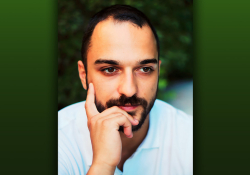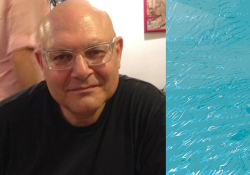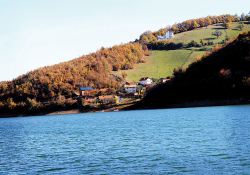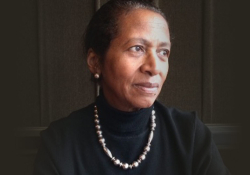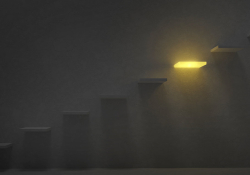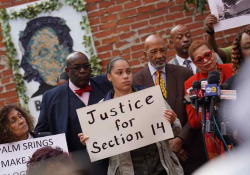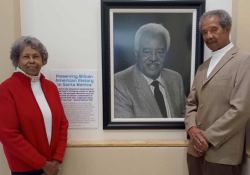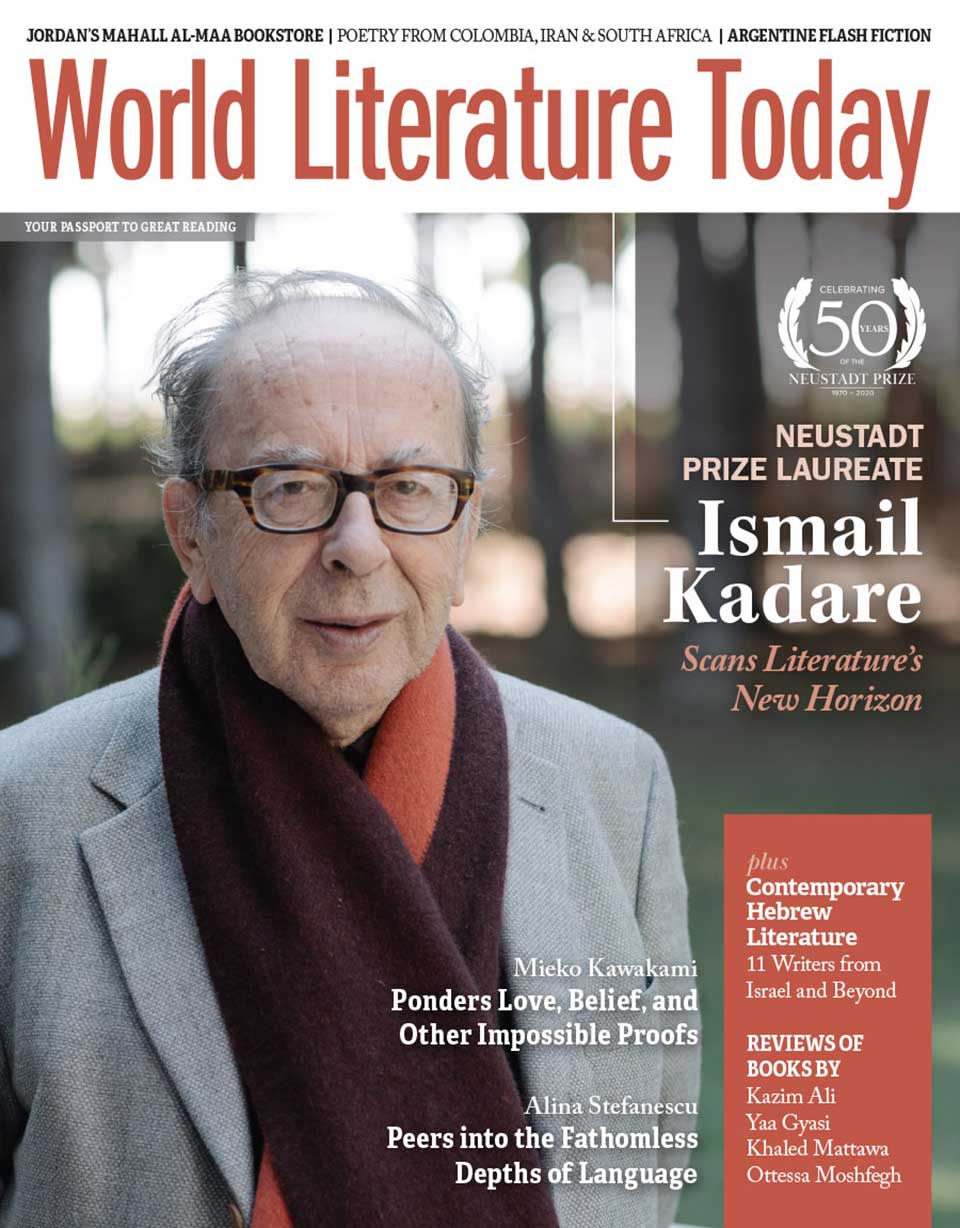Poetry and Wordplay in Afrikaans: A Conversation with Ilse van Staden
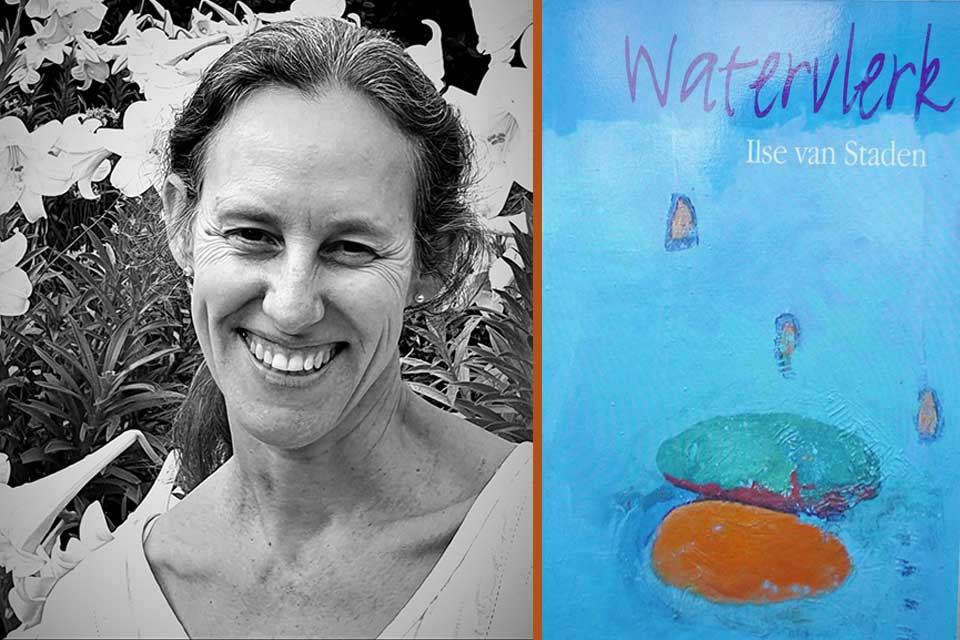
When South African poet Ilse van Staden’s first poetry collection, Watervlerk, was published in 2003, it was heralded as one of the groundbreaking poetry works of the new millennium that steered Afrikaans literature toward new and brave directions. Critics noted the inspired and daring creativity and innovation of van Staden’s language, an important linguistic and literary reawakening for Afrikaans after the oppressive decades of apartheid that had constricted, regulated, and censored the language and its literature. Watervlerk received the foremost South African literary prizes, the Eugène Marais Prize and the Ingrid Jonker Award, and was followed by three more poetry collections, a book of short stories, and a novel, all written in Afrikaans. Ilse van Staden, who now lives in Australia, has also written two novels in English. The three poems appearing in this issue are from her third poetry volume, Die dood is ’n mooi blou blom (Death is a beautiful blue flower), originally published in 2009.
Peter Constantine: Linguists identify Afrikaans as the youngest official language in the world, born as the first Dutch settlers arrived in South Africa in the seventeenth and eighteenth centuries. It only achieved official status in 1925. As a new language, it has been called a jargon or “kitchen” Dutch and was thought to lack any power of expression, a view that began to change when the first major Afrikaans literary works began to appear.
Ilse van Staden: I don’t actually notice that I’m writing in a young language; whether it is young or old doesn’t affect my writing directly. Of course, you have a field of reference when you start out as a writer—what has been said or done before and in what way—and this field of reference is much smaller for a young language. When I started writing poetry more than forty years ago as a young child, Afrikaans was just over half the age it is now, which means it has changed a lot since then and is still changing quite rapidly.
Constantine: It seems very much in flux, with exciting developments.
Van Staden: It is indeed changing at a great pace, even if it is just the dialects or varieties that are veering away from the standard language. This is particularly true of Kaaps, the language spoken in the Western Cape province, mostly by people of mixed racial heritage, which has moved significantly from Afrikaans and has a new generation of cutting-edge young writers. If I look at the first poems in Afrikaans from the late nineteenth century before it became an official language, I have to make the same effort in reading these poems as I would, say, for English literary works from the seventeenth century. On one hand, I do not think that Afrikaans’ youthfulness affects how one writes poetry in it; there are still certain poetry basics—rhyme, rhythm, metaphors—and those can be experimented with in any language. Compare Shakespeare to e.e. cummings, for example. On the other hand, the sounds of words and the creation of new words is an element of Afrikaans poetry that, compared to other languages I know, is unique and a wonderful element to explore. Breyten Breytenbach, for instance, is a master with words—he is more than a wordsmith, he is an alchemist.
Constantine: Archipelago Books is about to bring out an English translation of Catastrophes, one of his first books that had taken South Africa by storm back in the early 1960s.
Van Staden: Breytenbach puts words together that you would never expect within miles of each other, in the most unique metaphors. But that can of course be done in any language. What fascinates me is the sound of his poetry—you can hear it in your head, every vowel and consonant—it’s almost like a whimsical phonetics lesson. And the way he creates new words. They are not words that would function anywhere else, but within his poems they become real. They are not Afrikaans words, but he makes them Afrikaans words, like chimeras that, in the context of a poem, become clear.
Constantine: I first encountered Afrikaans as a teenager; it was during the 1970s when much emphasis was put on suiwer Afrikaans, “clean Afrikaans”—everything very correct, no anglicisms and no suspect words that were not approved by the language commission. And yet I felt that there was something very unusual and creative about Afrikaans, the way its word fusions could lead to uncanny nuances.
Van Staden: Was it perhaps the insecurity of a young language clinging to form and dogma because it was afraid of losing its newfound identity? Fortunately—and maybe poetry and literature played a part in this—Afrikaans has become much more flexible and tolerant. It has a mixed ancestry: mainly Dutch but also English, German, French, Malay-Portuguese creole, Khoisan, and other African languages. But then again English has a mixed ancestry too. Perhaps Afrikaans as a young language is still very close to its ancestors, and that makes it more flexible as it grows and develops. It is like a young child running ahead to investigate the world but then coming back to briefly clasp its parent’s hand once again. It can dip in and out of the past, dawdle through the present, perhaps even stick its nose into the future. Unlike English, for which the fifth-century Anglo-Saxon dialects and Greek and Latin as etymological ancestors are very far away, like dusty great-great-grandparents. The pared-down grammar and structure of Afrikaans may also play a role. Words are basic, which means the poet then has the freedom to change them. Another aspect of Afrikaans is its rich tendency toward onomatopoeia—I think a lot of this comes from the indigenous languages, like Khoisan—and the way one can be creative with compound words.
Afrikaans is like a young child running ahead to investigate the world but then coming back to briefly clasp its parent’s hand once again.
Constantine: Speaking of creative compound words, one of the elements of your poetry that has fascinated me is the innovation and inventiveness of your language. When your first volume of poetry, Watervlerk, was published in 2002, critics spoke of word landscapes and pointed to surprising neologisms that show Afrikaans’s potential for nuance. I remember one of the words that had caught a critic’s eye was handvlerkiges, which he translated as “those with hands for wings.” In a later poem, “still-scape,” you write of a landscape of stillness that an eye might fuse into: winterligtewindbloulug, “winter-mild-wind-blue-air.” One feels that Afrikaans, particularly in the way you use it, is always at least one step ahead of English.
Van Staden: The word handvlerkiges is my direct translation from Chiroptera, the scientific order of mammals to which bats belong. Etymologically, the word means “handwing” in Ancient Greek, from kheír, “hand,” and pterón, “wing.” So this was a case of my dipping into other languages, Ancient Greek and scientific terminology, in order to create a word in Afrikaans. Theoretically, you can create endlessly long compound words by just adding more modifiers, so in “still-scape,” instead of just writing the “wintery mild windy blue air,” I used a compound word to form a more quiet, uninterrupted horizon line for the poem.
Constantine: Your newly minted words seem to gather together many intriguing elements and histories.
Van Staden: I love etymology and love playing with words. One of my poems from Watervlerk comes to mind. The title of the poem “Skonelapper” is a wordplay on skoenlapper, “butterfly,” and difficult to explain in English. Skoen means “shoe.” Skone means “beautiful,” or “clean,” but skoon can also mean “completely.” So when a single letter in a word migrates—like a butterfly—to a different spot, it creates something so fascinating that the poet is knocked off her feet or, in this case, out of her shoes. And I must say this wasn’t thought out or planned, it just came to me as a sudden realization—a butterfly effect.
When a single letter in a word migrates—like a butterfly—to a different spot, it creates something so fascinating that the poet is knocked off her feet or, in this case, out of her shoes.
Constantine: The first poem of yours that I read was “return,” which is among the poems published in this issue. I feel that “return” touches on many of the themes central to your work: animals, nature—perhaps the cruelty of nature—and time that stretches back across many millennia. Coelacanths and other ancient animals appear in intriguing ways in other poems too.
Van Staden: Maybe the fact that I grew up on a farm, surrounded by nature, played a role in the subject matter of my poetry. The first poem I wrote, at age six, was about a fish. Some of my poems, especially in Watervlerk, were inspired by youthful recollections, memories of a life close to the basic things—water, earth, growth, life and death. And my science-oriented career as a veterinarian has strengthened this connection to nature and its processes.
Constantine: I’ve always felt that there is something pivotal about “return.” Would you agree?
Van Staden: The passage of time on a geological and evolutionary scale is the poem’s theme, but it is also an actual return to the themes from previous poems. For me it is also a step toward thinking about not just life, but death. One of the challenges you face as a poet, as you write more and more, is not to get stuck in a rut, carving a thematic and technical or formal niche for yourself and then getting trapped in it. But then, sometimes you feel there is more to explore around a certain theme, whether it’s in terms of subject or technique. And then you return to it. Or it returns to you, like an ancient coelacanth you had thought extinct long ago. Is this a bad thing or a good thing? It depends on whether you judge a poem in isolation or within a context of what has already been written.
I have often thought that I ought to write more betrokke poësie, “engaged poetry,” or poetry of commitment that has social commentary at its core. Aren’t artists supposed to comment on the state of the world and change it for the better? But for me writing such poetry would feel insincere and forced. I can only write what I write. Even in my nature poetry, I do not know how to comment on global warming and environmental disasters. As we say in Afrikaans, “Elke voëltjie sing soos hy gebek is” (every bird sings according to its beak).
Constantine: You mentioned that “return” was for you a step toward thinking about death. In the second poem published in this issue, “traveling by house toward death,” the theme of death is much more central.
Van Staden: This poem is from my third book, Die dood is ’n mooi blou blom, and I wrote a lot of the poems in this book while struggling with depression. Writing poetry was a way of contemplating and meditating on death. For me, death and our journey toward it is not a morbid subject but an exciting voyage. In this poem I imagined myself inside my home, which had numerous small, porthole-like windows, as if traveling in a ship—a mini-Titanic on her maiden voyage—toward death. Death, in other words, with death as a destination. During the same period, my mother was busy with a series of three paintings called Death Is a Beautiful Blue Flower. I used this as inspiration for another poem and chose it as the title for the book. Sadly, just as I was getting ready to publish the poems, my mother passed away.
Constantine: This was the first book of yours that I read, and I was drawn to its originality and great emotional depths. It is sad that this wonderful work came to be at a time of such tragic personal loss. The third poem published in this issue, “door,” is also from this collection.
Van Staden: I can’t remember what inspired this poem. It was probably one of those times when I just let the words out of their paddock to play around on their own! In Afrikaans the word deur means both “door” and “through.” Perhaps the poem is about dualities, about doubts and paradoxes, even duplicity: doors can be opened by hammers and axes, but also by words. And the hypocrisy of words: professing that opening a door, going through a passage, even into death, should be done gently and with caution, but while saying this you’re carrying a hammer, or a hammering word, in the other hand. Do you “go gentle into that good night,” as Dylan Thomas says, or do you not? One does have a choice. In Afrikaans when we say that a bullet has gone through the church, we imply that something irrevocable has happened. But there is nothing irrevocable here, no bullets have been shot through churches, hence no violence, just the gentle “open sesame” of a doubting word, and then stepping through the door.
There is nothing irrevocable here, no bullets have been shot through churches, hence no violence, just the gentle “open sesame” of a doubting word, and then stepping through the door.
Constantine: You have mentioned to me personally that you grew up bilingually in Afrikaans and English. As a young poet did you specifically choose Afrikaans as the language in which you would write poetry?
Van Staden: Is it choice or inevitability? I started writing poetry at a very young age, before I was fluent in English, so Afrikaans was always my first choice. And there must have been some pressure from my mom, hoping to raise an Afrikaans poet—the Christmas gift I was given when I was seven was a volume of poetry by Elizabeth Eybers, the first published female Afrikaans poet. Even now, I am reasonably comfortable writing prose in English but not poetry.
Constantine: How does one of your poems become a poem? What are your writing strategies, and have these strategies changed over the years?
Van Staden: The short answer: I don’t know. It’s a mystery, very much an intuitive process, which hasn’t changed over the years. But I will try to explain the different places I start from. If I start out on a completely new poem or theme, I will mostly just sit down with pen and paper, almost as if meditating, or fossicking, as we say in Australia where I now live—fossicking, as in prospecting for gold or gemstones in abandoned mines—and just start playing around with thoughts and words.
Of course, nothing is ever completely new. It is always sparked by some previous experience, whether emotional, sensory, or intellectual. But if I am already exploring a certain theme, I sometimes make a mind map to help me visualize it, then free-associate with words and wordplay and intertextuality. On rarer occasions, if there is a subject I want to address, a specific message I want to convey, I mull it over for some time, perhaps trying out words or phrases in my head, before sitting down to write. That is the starting point. The rest is just assembly, like putting strokes of paint on a canvas. Deleting, painting over, changing, shaking it into shape.
December 2020
Read Constantine's translations of three of van Staden's poems from this same issue.

